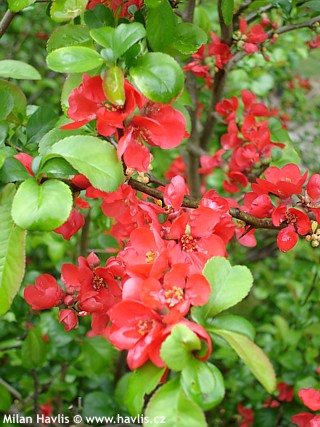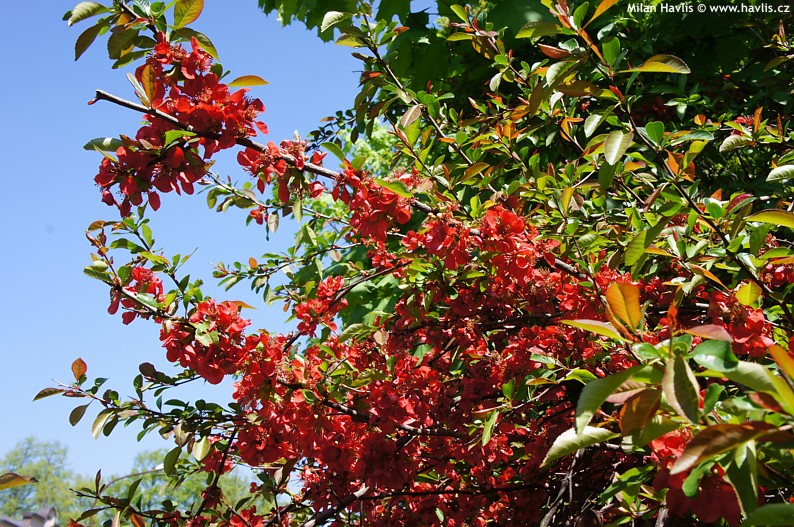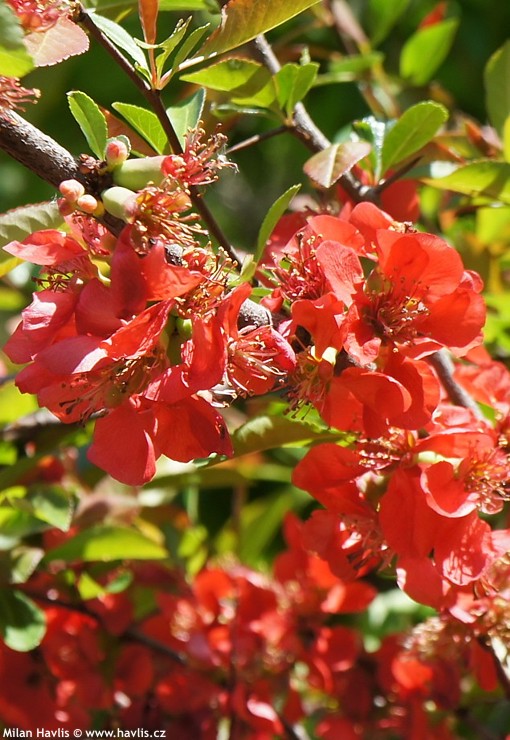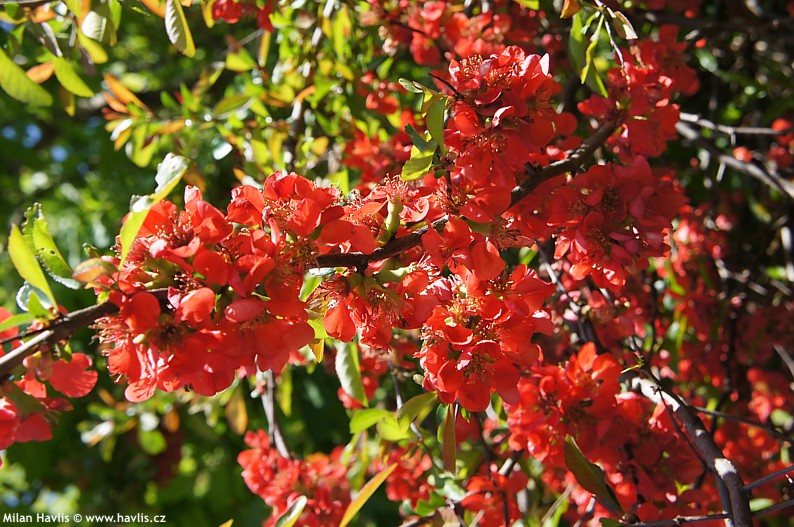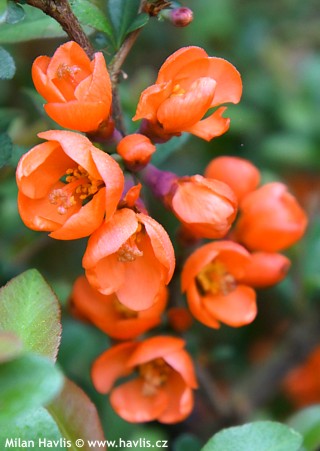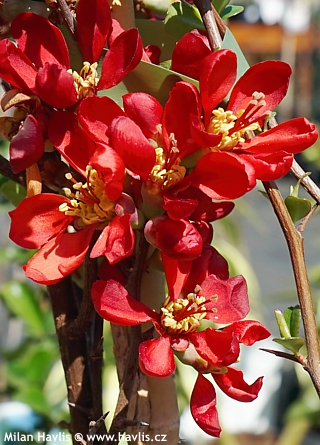Chaenomeles speciosa 'RUBRA' Chinese flowering quince
size/type
medium-sized shrub,medium-sized shrub
usual height
1,5-2,5m
usual width
1,5-2,5m
leaves
deciduous broadleaf
colour of leaves
flowers
showy
colour of flowers
blooming time
April-May
location
full to partial sun
soil type
acidic (peaty) to neutral
USDA zone (lowest)
5 (down to -29°C)
winter protection
for zone 5+6

for zone 7

categorized
Chaenomeles
Flowering quince is one of the most popular shrubs for bonsai makers. It is valued for its profuse flowering and irregular growth ideal for never-ending clipping and shaping. In Japan it is cultivated in similar quantity to flowering cherries and magnolias. It is a deciduous shrub with glossy, dark green leaves, and branches with 2-3 cm long spines.Description of the plant:
Rubra is possibly the most common red flowering variety ofwhich in this case should not be called Japanese since it comes from China. It produces numerous red flowers which usually open from mid April. However, if the winter is warm you can see numerous buds opening already in March. The shrub flowers for 4-6 weeks, well into early May when leaved out, still, the prettiest sight is at its bare branches with small, rich red, rounded buds slowly opening like a lotus flower, woken up by early spring sun and warmth. In October ripens funnily shaped, very aromatic and edible, green-yellow fruit, mostly inside the shrub on older branches.
Flowering quince will grow in almost any soil apart from too alkaline. For best results grow it in moderately fertile and reasonably drained garden soil, it can take clay and occasional drought when established but evenly moist soil will secure richer growth and better appearance. Pruning is crucial unless you like its natural unkempt habit. Prune the branches hard immediately after by 70-80% and remove leggy twigs from inside the shrub to achieve an airier habit with visible framework. Hardy to about -29°C (USDA zone 5) and suitable for outdoor pots.
Last update 06-03-2014
QUICK PRICE OVERVIEW
CURRENTLY SOLD OUT
WANT TO TRY A SIMILAR PLANT?












